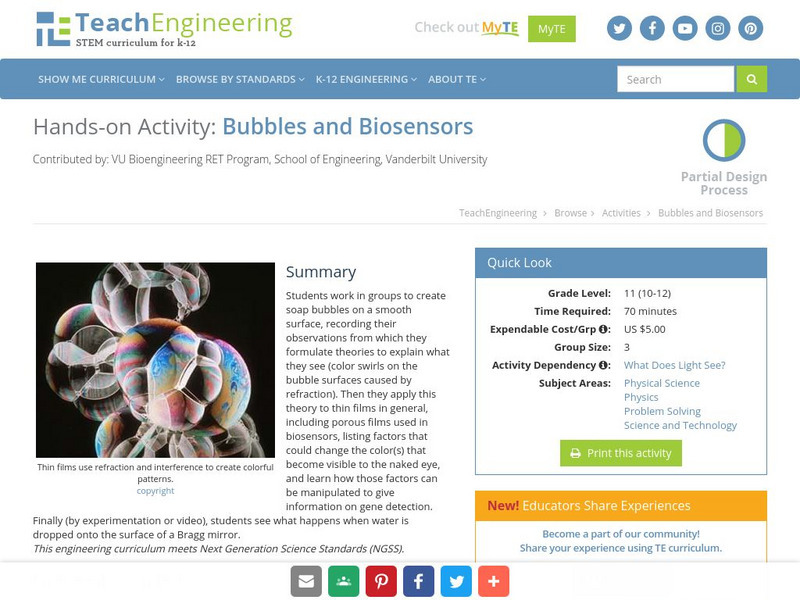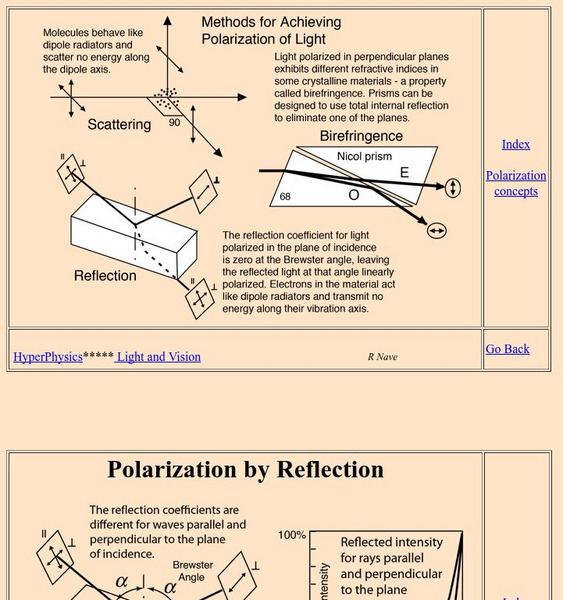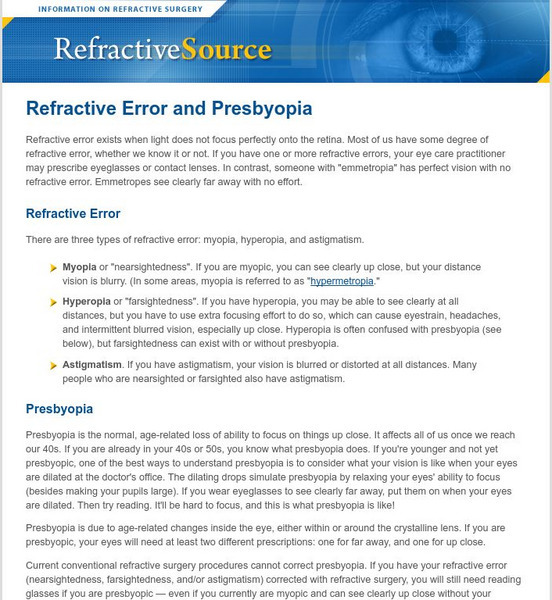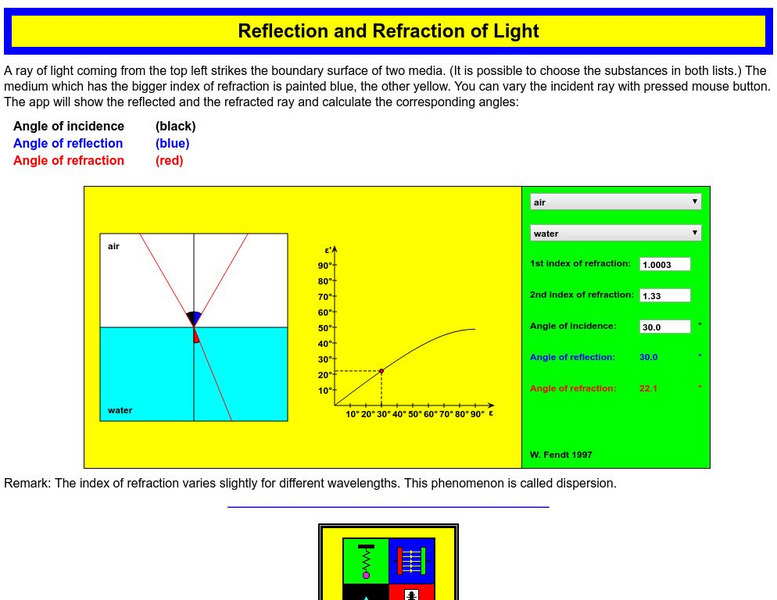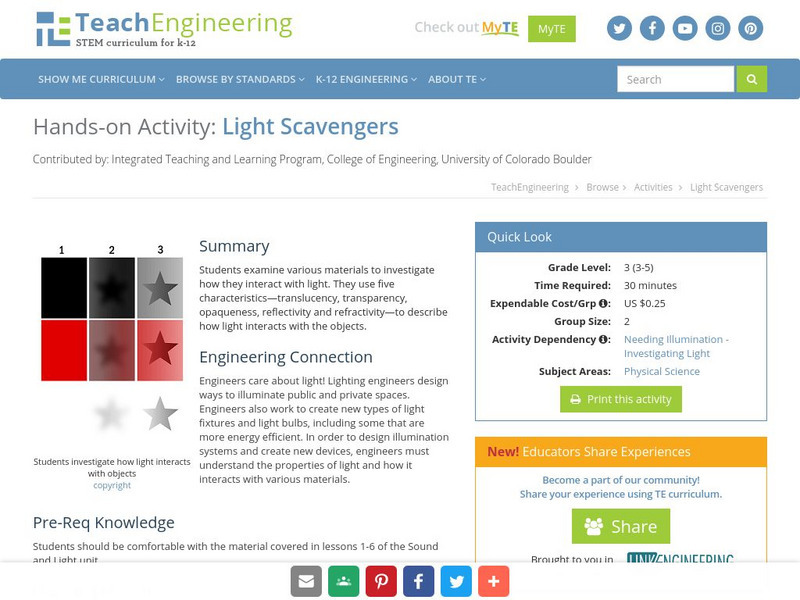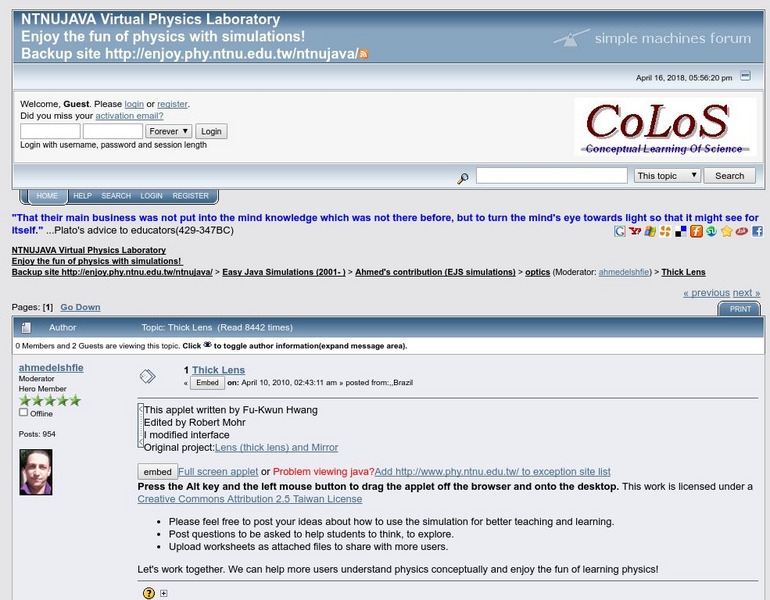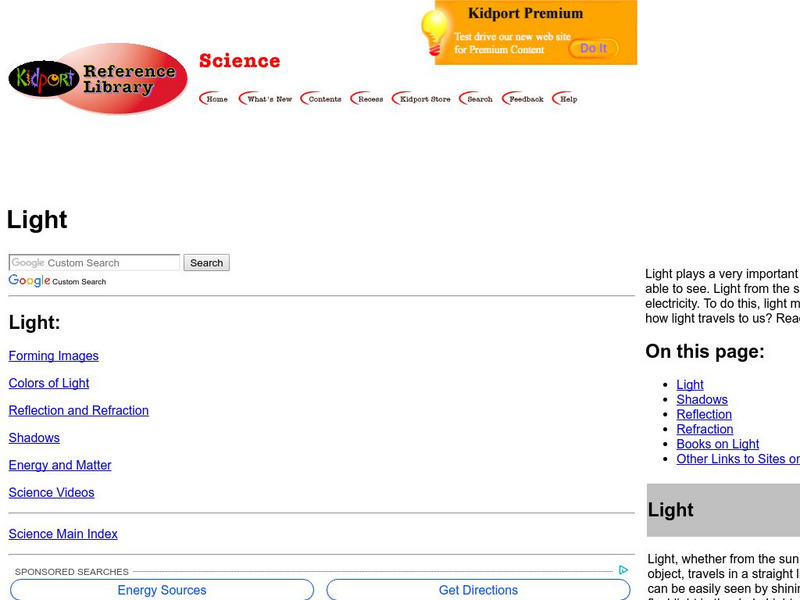Synopsys
Synopsys: Optics for Kids: What Is Light?
An explanation of what light is and some of its properties.
PBS
Pbs Learning Media: Diamonds: The Science Behind the Sparkle
This illustrated essay from the NOVA Web site explains why the atomic structure of a diamond slows down light and produces a sparkle more brilliant than from any other colorless substance.
TeachEngineering
Teach Engineering: Bubbles and Biosensors
Students learn that color swirls on the bubble surfaces are caused by refraction. Then they apply this theory to thin films in general, including porous films used in biosensors, listing factors that could change the color that become...
Georgia State University
Georgia State University: Hyper Physics: Methods of Polarization
At this college physics department site, the polarization of light is explained and illustrated as well as the primary methods of polarization (scattering, reflection, and refraction).
Other
Refractive Error and Presbyopia
Very good information about refractive error and presbyopia. Refractive error exists when light does not focus perfectly onto the retina.
Georgia State University
Georgia State University: Hyper Physics: Crossed Polarizers
At this univeristy physics department site, the polarization of light is explained and illustrated. Methods for analyzing light to determine the degree of polarization are stated and explained with equations.
Walter Fendt
Walter Fendt: Reflection and Refraction of Light
Defines the refraction of light and provides an applet for investigating it.
TeachEngineering
Teach Engineering: Light Scavengers
In this activity, students examine various materials and investigate how they interact with light. Students use five new vocabulary words (translucent, transparent, opaque, reflection and refraction) to describe how light interacts with...
Walter Fendt
Walter Fendt: Refracting Astronomical Telescope
An app for investigating the operation of a refracting telescope. The location of the eyepiece and objective lens can be altered, and the focal point and path of light through the lenses can be observed.
My Science Site
My Science Site: The Light for Sight [Pdf]
This resource offers a hands-on activity for science teachers to teach about the eye and it's ability to see images. Also discusses refraction and reflection. This resource is in PDF form; requires Adobe Reader.
Physics Classroom
The Physics Classroom: Refraction/ray Model of Light: Determination of N Values
Through illustrated examples and interactive practice problems, students explore the details of Snell's Law.
Physics Classroom
The Physics Classroom: Refraction and the Ray Model of Light: Converging Lenses
The purpose of this tutorial is to summarize object-image relationships by dividing the possible object locations into five general areas or points.
Physics Classroom
The Physics Classroom: Refraction and the Ray Model of Light: Diverging Lenses
In this illustrated tutorial, students will see a specific method for constructing ray diagrams for double concave lenses.
Physics Classroom
The Physics Classroom: Refraction/ray Model of Light: The Mathematics of Lenses
Using the Lens Equation and the Magnification Equations, students determine numerical information about image distance and image size.
Physics Classroom
The Physics Classroom: Refraction/ray Model of Light: Light Dispersion Prisms
A tutorial which introduces students to the dispersion of light in more detail, and investigates the reasons why different frequencies of light bend or refract different amounts when passing through the prism.
Khan Academy
Khan Academy: Light Rays
This is a quiz covering reflected, refracted, shadow, and camera rays.
Khan Academy
Khan Academy: An Experiment With Light Rays and a Prism
This passage will test your knowledge on reflection and Refraction - Passage 2.
University of New South Wales (Australia)
University of New South Wales: School of Physics: Physclips: Geometrical Optics
Physiclips thoroughly presents geometrical optics concepts like rays, refraction, Snell's law, total internal reflection, dispersion, mirrors, and lenses with animations and film clips.
Other
Ntnu Virtual Physics Lab: Thick Lens Java Applet
An interactive Java applet which allows the user to investigate the path of light through a lens shape object. The shape of the object, the index of refraction of the material, and the location of the incident rays can be altered.
Exploratorium
Exploratorium: Critical Angle
Students can see light reflected and refracted in this demonstration. They will also discover the total internal reflection of light.
Optical Society
Optical Society of America: Optics for Kids: Bending Light
An experiment using a water lens that demonstrates how the eye sees an image. Accompanied by an explanation of what's happening, and a link to an article on refraction.
Mocomi & Anibrain Digital Technologies
Mocomi: What Is Scattering of Light?
Do you know why the sky is blue? Article defines scattering and how it works. Explains the difference between the scattering of light and reflection or refraction.
Kidport
Kidport: Light
Did you know that light is a form of energy and always travels in a straight line? Discover some more interesting facts about light.
Ducksters
Ducksters: Physics for Kids: Light
Kids learn about the science of light. Energy made of waves and particles called photons traveling at the top speed in the universe. What is refraction? The difference between transparent, translucent, and opaque.
Other popular searches
- Refraction of Light
- Science Light Refraction
- Light Refraction Water
- Lab on Light Refraction
- Prism Light Refraction
- Reflection Refraction Light
- Light Refraction by Prism
- Refraction of Light Mirrors
- Light Refraction Slide
- Science Refraction of Light
- "Refraction" Light
- Science: Refraction of Light


